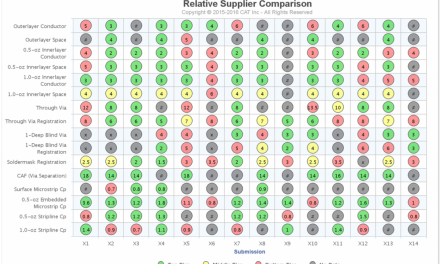U.S. Manufacturing PMI® at 46.4%
July 2023 Manufacturing ISM® Report On Business®
- New Orders, Production, Employment and Backlogs Contracting
- Supplier Deliveries Faster
- Raw Materials Inventories Contracting; Customers’ Inventories Too Low
- Prices Decreasing; Exports and Imports Contracting
Economic activity in the manufacturing sector contracted in July for the ninth consecutive month following a 28-month period of growth, say the nation’s supply executives in the latest Manufacturing ISM® Report On Business®.
The report was issued by Timothy R. Fiore, CPSM, C.P.M., Chair of the Institute for Supply Management® (ISM®) Manufacturing Business Survey Committee:
“The July Manufacturing PMI® registered 46.4 percent, 0.4 percentage point higher than the 46 percent recorded in June. Regarding the overall economy, this figure indicates an eighth month of contraction after a 30-month period of expansion. The New Orders Index remained in contraction territory at 47.3 percent, 1.7 percentage points higher than the figure of 45.6 percent recorded in June. The Production Index reading of 48.3 percent is a 1.6-percentage point increase compared to June’s figure of 46.7 percent. The Prices Index registered 42.6 percent, up 0.8 percentage point compared to the June figure of 41.8 percent. The Backlog of Orders Index registered 42.8 percent, 4.1 percentage points higher than the June reading of 38.7 percent. The Employment Index dropped further into contraction, registering 44.4 percent, down 3.7 percentage points from June’s reading of 48.1 percent.
“The Supplier Deliveries Index figure of 46.1 percent is 0.4 percentage point higher than the 45.7 percent recorded in June. In the last eight months, the Supplier Deliveries Index has recorded its eight lowest readings since March 2009 (43.2 percent). (Supplier Deliveries is the only ISM® Report On Business® index that is inversed; a reading of above 50 percent indicates slower deliveries, which is typical as the economy improves and customer demand increases.)
“The Inventories Index increased by 2.1 percentage points to 46.1 percent; the June reading was 44 percent. The New Export Orders Index reading of 46.2 percent is 1.1 percentage points lower than June’s figure of 47.3 percent. The Imports Index remained in contraction territory, registering 49.6 percent, 0.3 percentage point higher than the 49.3 percent reported in June.”
Fiore continues, “The U.S. manufacturing sector shrank again, but the uptick in the PMI® indicates a marginally slower rate of contraction. The July composite index reading reflects companies continuing to manage outputs down as order softness continues. Demand eased again, with the (1) New Orders Index contracting, though at a slower rate, (2) New Export Orders Index moving deeper into contraction and (3) Backlog of Orders Index improving compared to June but remaining at a low level. The Customers’ Inventories Index reading indicated appropriate buyer/supplier tension, which is neutral to slightly positive for future production. Output/Consumption (measured by the Production and Employment indexes) was negative, with a combined 2.1-percentage point downward impact on the Manufacturing PMI® calculation. Amid mixed sentiment about when significant growth will return, panelists’ companies reduced production and continued to manage head counts down, to a greater extent than in previous months. Inputs — defined as supplier deliveries, inventories, prices and imports — continued to accommodate future demand growth. The Supplier Deliveries Index again indicated faster deliveries, and the Inventories Index remained in contraction territory as panelists’ companies continued to try to mitigate inventories exposure. The Prices Index remained in ‘decreasing’ territory, at a level generally not seen since early in the coronavirus pandemic (a reading of 40.8 percent in May 2020). Manufacturing lead times sentiment improved again but remain at elevated levels.
COMMENTS:
- Current U.S. market conditions of inflationary and recessionary tactics affecting overall business. Customers are reducing or not placing orders as forecast, (putting) internal focus on reducing financial liabilities and overhead costs.” [Computer & Electronic Products]
- “Sales in our industry are extremely slow entering into the second half of the year, and no upturn is expected until at least the fourth quarter.” [Chemical Products]
- “Demand is softening. Some pricing starting to decrease. Back orders mostly resolved.” [Transportation Equipment]
- “Stable demand for the next four to six months, but longer-term uncertainty. While customer growth is projected, we cannot point to fundamentals that sustain it. Supply conditions are similar to pre-pandemic, except for energy and raw input costs. Logistics costs have settled, transit times continue to shorten and capacities at most suppliers are sufficient.” [Fabricated Metal Products]
- “Suppliers are starting to reach out looking for new business. Softening is occurring in the China markets.” [Machinery]
- “Sales remain higher than forecast. Supplier capacity issues remain an issue.” [Miscellaneous Manufacturing]
- “Semiconductor trade restrictions against China have negatively impacted our industrial business in North America.” [Electrical Equipment, Appliances & Components]











